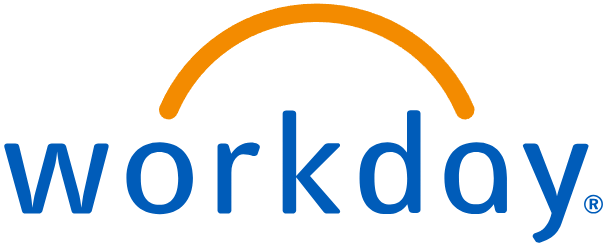How Iowa State uses Workday to manage students and break down silos

Kristen Constant knew Iowa State needed to make a dramatic shift away from its reliance on a mainframe to manage financial, human resources and student information technology needs. As a Vice President and Chief Information Officer as well as a faculty member, Constant could see that the technology landscape was changing alongside the needs of Iowa State’s students and the university’s systems were not keeping pace.
Iowa State was also facing a critical workforce issue. “We saw the slow loss of people who could work with our systems,” she says. “That spurred us to develop a whole enterprise system approach that would serve human resources, finance and student functions.”
The Value of a Single Solution
The university needed one system that could manage everything from onboarding new students, to registration to academic planning and even finance. The team also wanted a secure, cloud-based platform that could interface with other aspects of the university–like human resources.
Iowa State chose Workday to administer the lifecycle of its students. “It follows them (from the admissions process until they graduate,” says Steve Kish, who leads system implementation for the university.
“When you have all that information together, you see a more complete picture of an individual student,” allowing the team to deploy more sophisticated data analytics that can help students succeed, Constant says. “You’re not just seeing puzzle pieces. That helps us better serve our students.”

Iowa State transitioned its finance and human resources functions over to Workday in 2019. When it chose Workday Student, it became the first Research 1 university to use all of the company’s products.
Having one program that serves multiple functions was especially appealing to Constant. “When you have multiple systems, there are sometimes different versions of the same record or name, and it can be difficult to get those synchronized,” she says. Having one system means “one source of truth,” when it comes to records. It promises a higher level of security, she says, because records do not have to pass through multiple programs. It’s also easier to modify, because the team does not need to ensure that a change in one system won’t adversely affect another.
Geoff Janes, Senior Manager of Information Technology Systems, was drawn to the opportunity to collaborate with Workday as the product was in its infancy. “We could see Workday was on the cutting edge and could enable far more opportunities than our current systems,” Janes says.
Thoughtful implementation, appealing features
The migration to Workday for human capital and finance was an immediate switch. Student implementation, however, typically requires anywhere from 18 months to two years plus to deploy, based on Workday’s recommendation, Constant says.
“The student experience is always top of mind when speaking with institutions, “said Michael Hofherr, General Manager, SLED at Workday. “The length of deployment is tied to making sure that experience causes as little disruption as possible. To ensure minimal disruption we deploy Student in-line with the institution’s academic calendar, which allows customers to turn on capabilities incrementally,” he added
Iowa State introduced the admissions features in June of 2023, and the registration components went live in the spring of 2024. This summer, receivables and student billing went live. By October, it will be the official system of record for all student information.
The team was pleased to see how quickly students were able to learn and utilize the new registration system in March. “That was not the case with our legacy systems,” Janes says. “That was a much more difficult journey. Workday seems to operate like a lot of other platforms students regularly work with.”
Now students can use Workday to prepare multiple versions of their future schedules and understand the classwork involved. “That would have been a tough process with our legacy systems,” Janes says, noting that students have ranked this among their favorite features.
It also provides students with a more transparent view of their progress toward degree completion in a clear infographic on their academic page. In the legacy system, a student would have to request that his or her advisor run an audit and then decipher a somewhat cryptic report.

Benefits beyond core functionality
While the Student features were attractive to Iowa State in their own right, the team also noted a number of additional benefits that came with implementation. For example, Constant says integration with finance and human resources is helpful, “because we have a good number of student employees.”
The program is also flexible, allowing Iowa State to seamlessly integrate its existing learning management system, Instructure’s Canvas. “We have the flexibility to make choices,” Constant says.
Connecting staff to improve functionality
Workday has also ushered in a cultural shift at Iowa State. "Being in a single, integrated system is pushing us to collaborate more closely. Different departments across campus now work together on processes that were more siloed in the past," Janes says. "When we started this process three years ago, we pulled everyone together, and I’m seeing the beginning of a cultural shift that’s having a positive impact,” he adds."
“The power of Workday is in our approach to support an institution’s most valued resources - people, finances, and students,” Hofherr says. Workday was founded with Higher Education at its core, and we remain steadfast in our commitment to providing a platform solution to institutions. Workday is the only cloud provider with a complete platform supporting Human Capital Management, Financial Management, and the Student experience with live customers. Our goal is to provide solutions that enable institutions to focus on their core mission - education and research,” he added
By bringing staff to the table across the institution with counterparts, Iowa State has been able not only to troubleshoot challenges but also suggest new features. “The partnership with Workday has been highly collaborative,” Kish says. In addition to working with leadership, Workday product staff engaged campus workstreams through implementation. Design teams even worked with university community members to improve specific business processes.
Take transfer credits. Iowa State’s initial Workday solution for certain types of transfer credit requirements wasn’t well supported by Workday, resulting in a confusing system that leveraged report-driven cohorts and conditional academic requirements. Students didn’t always understand these cryptic requirements and would also see the coursework applying which was in violation of university policy and would require manual overrides to remove the coursework.
Iowa State worked with Workday to create a Global Limits configuration that allows students to enroll in or receive transfer credit for courses on their record but limits or restricts the way in which those courses or total credits for those courses can be applied in the Academic Progress Report. The new functionality now allows the university to limit transfer credit from two year schools, credit for technical credit, and credit for engineering students transferring grades below C-, among many others.
“If innovation is our engine, our customers are the fuel,” says Michael Bisson, Vice President SLED at Workday. “This is perhaps the biggest synergy for Workday with Higher Education, because our industry is powered by its collaboration with peers.” Workday engages with customers through Design Partner Groups, advisory and user groups, conferences, and via brainstorms, Bisson explains. “This engagement with our customers ensures that our products and priorities remain aligned with the needs of the industry.”
Workday also offers universities the opportunity to connect outside of their institutions to learn from other higher education customers and collectively suggest changes to its products. “We have a lot of informal conversations with our peers,” Constant says. “That’s a very special thing about higher ed. We help each other out, and we pay it forward as much as we can. The better Workday gets, the better we will all succeed in using it. It’s a really collaborative, cooperative community.”
This content was sponsored and provided by Workday and produced by Inside Higher Ed's sponsored content team. The editorial staff of Inside Higher Ed had no role in its preparation.


